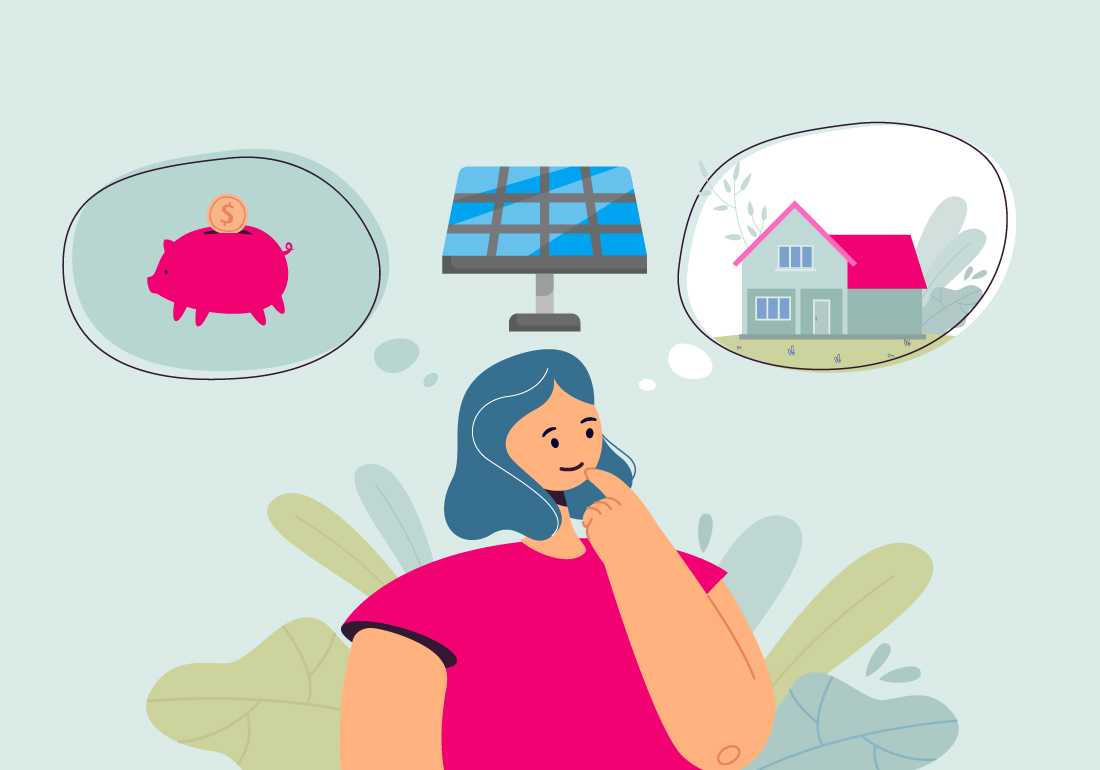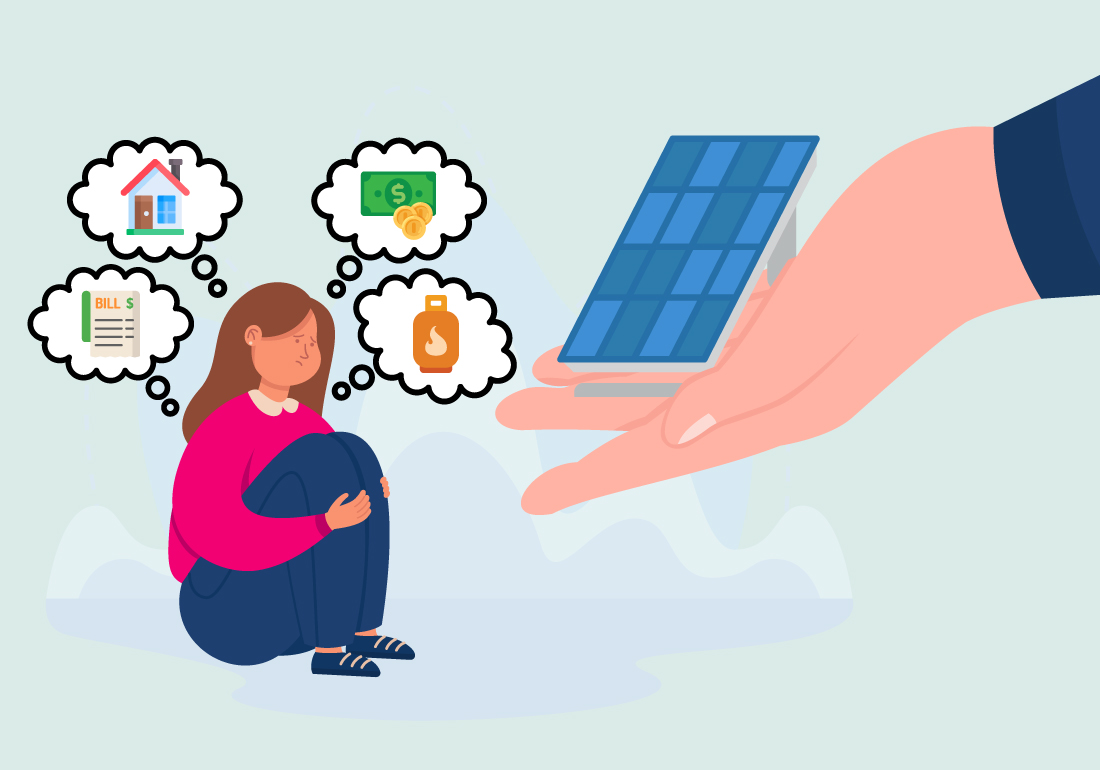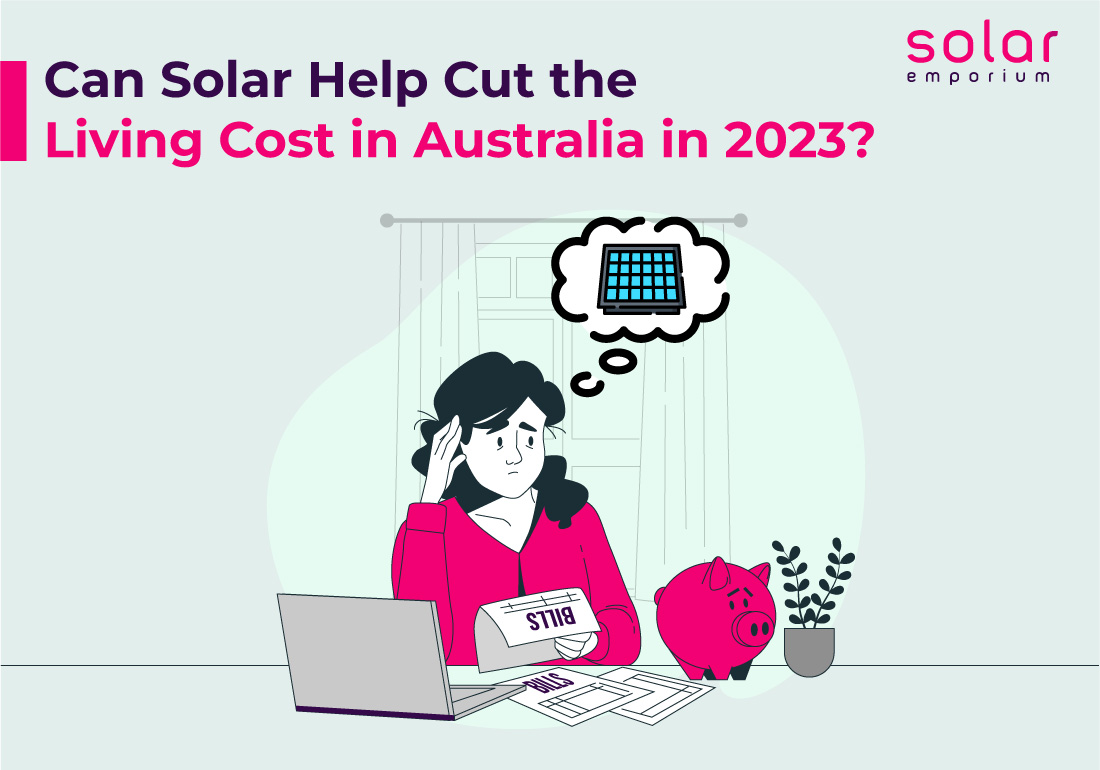Unsurprisingly, electricity prices are Australia’s top cost of living concern. Our power bills are among the highest in the world! Most Australians believe energy costs are their primary source of stress.
So the big question is, Can solar help cut the living cost in Australia in 2023? And can solar energy help Australians relieve energy bill stress?
Every day more and more Australian households are struggling to pay their electricity bills. Some reports indicate that families even choose to move houses! They are also discarding their belongings and appliances. Some even start living off the grid to reduce the cost.
Despite the abundance of solar energy available in Australia, the current rate of solar energy distribution needs to be improved. The Australian government launched several renewable energy policies to encourage the country’s accelerated adoption of solar energy.
Their goal is to develop the national renewable energy target. These solar-related policies can eventually cut the living cost in 2023. The primary policies are (i) state feed-in tariffs (FITs); (ii) solar rebates and incentives; and (iii) Renewable Energy Certificates. (RECs).
Feed-in-Tariffs
The Feed-in Tariff is another Australian subsidy for solar-powered households. Anyone with a grid-connected solar installation can benefit from these cost savings.
The majority of household solar systems will be linked to the power grid. Unless you live off-grid, any excess solar power generated by your solar panels is fed back into the grid.
That means power companies will pay you for the solar electricity your system exports to the grid.
Using a solar calculator, you can estimate how much power your house consumes and how much excess energy can go back into the grid.
The solar feed-in tariff, or the “buyback rate,” is the amount paid per kilowatt-hour of solar electricity exported to the grid from your solar system. Most Australian electricity retailers will now offer competitive feed-in tariffs within their standard product range.
The program is also separate from the STC program. The STC program and state incentives typically assist homeowners with only the initial installation costs of solar installations. It can provide financial benefits for the life of your PV system.
Rebates and Incentives

The Australian Federal Government provides federal financial incentives in most parts of the nation. These tax breaks encourage the installation of small-scale renewable energy devices. Solar, wind, and hydro are examples of small-scale renewable energy sources.
And solar photovoltaic (PV) panels are the simplest and most accessible choice for the average homeowner to install in their home.
Homeowners or small business owners can qualify for financial assistance through the Small-scale Renewable Energy Scheme (SRES).
After that, you will get the small-scale Technology Certificates (STCs). These STCs have a monetary value that can be redeemed when sold or assigned. More STCS may be granted to some installations. Two factors determine your chances of getting STCs-
- How much electricity is your system produces.
- And the weather of the area you installed your system.
The STC program is a government-run scheme. It compels others to purchase your STC certificates.
The Australian Federal Government scheme will subsidize solar systems starting in May 2021 at around $525 per kW installed. This subsidy will save you approximately $3,465 on a typical 6.6kW solar power system.
Rebates are typically applied at the point of sale when you purchase a system. As a result, advertised solar panels and kits prices will likely include the solar rebate.
Solar energy can benefit every Australian. Subsidies and other forms of assistance should tailor to individual needs. Hence, the Austral Federal Government also has some incentive programs across states.
The New South Wales Government has a solar power incentive called the Empowering Homes program. The Victorian government also provides incentives for homeowners, known as the Solar Homes program.
These schemes provide a financial incentive for ordinary Australians to install small-scale solar systems, solar water heaters, and heat pumps. Many other renewable energy schemes and incentives are available in different states.
Renewable Energy Certificates
Both large-scale power plants and small-scale system owners can apply for Renewable Energy Certificates.
Retailers should submit the certificate to Clean Energy Regulator to meet their legal responsibility under the Renewable Energy Target. It also creates an opportunity for system owners to receive financial incentives.
Energy certificates can provide customers with fair prices for installation and energy bills.
But What About Solar Equity?

Renewable energy is critical for lowering energy bills, mitigating climate change, and promoting sustainable development. However, access to solar power is only equitable for some Australians.
Due to the high upfront costs, many people need help installing energy-saving options such as solar panels or insulation. A large majority of those who are financially stressed earn less than A$50,000.
And people between 18 and 34 do not intend to install energy-saving options for lack of funds.
What policies Can Help Increase Solar Equity?
Among existing policies, some other steps can help improve equity in rooftop solar access-
- Direct financial assistance for low-income households
- Variety of other financial incentives and solar rebates
- Community solar programs with households to share the benefits.
Some programs are already in place to assist low-income homeowners in installing solar systems. New South Wales has a “Solar for low-income households” program.
Individuals who qualify can receive a free 3-kilowatt solar system for the previous Low-Income Household Rebate for ten years.
Enjoy the Power of the Sun With Less Energy Bills

The Renewable Energy Target in Australia has implemented energy schemes to ensure solar equity to cut living costs for consumers of Australia. And as solar panel prices are slowly dropping, the perfect time to invest in solar energy.
Be a part of the solution and join the thousands of Australians who benefit from solar energy.
- Decrease your electricity bills dramatically so that you can focus on more important things.
- Reduce your carbon footprint and contribute to renewable energy targets.
- Generate clean power for your home or business without blowing up your savings.
- Increase the value of your home or business.
Because of the increasing global attention to greenhouse gases, it is inevitable to transition to renewable energy sources such as solar.
Australia is one of the world’s largest energy consumers and has favorable environmental conditions for solar technology distribution. Get a free quote from Solar Emporium for solar panels to avail these benefits.







